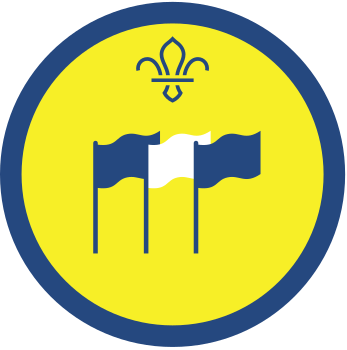
Local to global
You’ll need
- Pens or pencils
- A4 paper
- Camera or phone
Before you begin – find a group
- Consider getting in touch with people in your District or County to see if any international trips are planned – you could link with people in these countries.
- Some established groups may have existing contacts. If you don’t, you could ask a more experienced leader. You could also post on a trusted Scout social network, or ask about any international camps that may have happened locally.
- Give everyone a chance to have their say about where they’d like to link with. It might not always be possible to make a link with their first choice, but it’s good for everyone to be a part of the process.
- Find out about National Scout Organizations around the world.
- Once you’ve identified a potential link, send an email. Don’t forget to mention how you found their contact details, why you chose that group, location, or country, and your proposal for exchange (in this case, sharing pictures through the post).
- Check that any potential links are with recognised groups that are members of the World Organization of the Scout Movement. This way, you know the adults have been vetted in line with WOSM recognised standards of child safeguarding. If you’re not sure, ask the person you’re contacting about their safeguarding or safe from harm training, and how long they’ve volunteered with Scouts.
- If you’re still concerned, or just not sure, don’t continue with the link. Remember, you can always seek advice from the Scout Support Centre.
Make some pictures
- Everyone should work together to think about local landmarks and places or things that are important to their community.
- This is an international activity, so you could also think about things that are British – even if they’re everyday objects. For example, post boxes, signs, and supermarkets.
The person leading the activity should make a decision about where everyone will go.
- Everyone should set off with pens and paper, cameras, or smartphones. They should try and gather pictures that represent their local area.
- Everyone should gather back together and share their pictures.
Send the pictures
- The person leading the activity should help everyone to write a short note to include with the pictures. Depending on language barriers, people may also want to include some simple descriptions of the pictures or the reasons why people chose them.
- The person leading the activity should pack the pictures in a big envelope – it’s best if they don’t need to be folded.
Cardboard backed envelopes are great, a padded envelope with a piece of cardboard inside to keep it flat would also work well.
- The person leading the activity should send them via international service.
If you can, get a delivery receipt. This helps avoid uncertainty, and might save the overseas contact the trouble of having to track down a lost package.
Reflection
This activity reminded everyone that they’re an international citizen. People have Scouts in common with others all over the world – in lots of different countries, people are doing similar things through Scouts! What differences might there be between Scouts in other countries and the UK? How else could the group communicate with international Scouts?
Safety
All activities must be safely managed. You must complete a thorough risk assessment and take appropriate steps to reduce risk. Use the safety checklist to help you plan and risk assess your activity. Always get approval for the activity, and have suitable supervision and an InTouch process.
- Online safety
Supervise young people when they’re online and give them advice about staying safe. Take a look at our online safety or bullying guidance. The NSPCC offers more advice and guidance, too. If you want to know more about specific social networks and games, Childnet has information and safety tips for apps. You can also report anything that’s worried you online to the Child Exploitation and Online Protection Command. As always, if you’ve got concerns about a young person’s welfare, including their online experiences, follow the Yellow Card to make a report.
- Phones and cameras
Make sure parents and carers are aware and have given consent for photography.
International groups
All contact with groups must be supervised and must involve an exchange or collaboration. Contact shouldn’t involve donations or exchanges or personal details. Contact should be with WOSM members, so you know any groups have been properly vetted. For more guidance, see here.
Depending on where you’re sending your pictures, people could try and write messages in English or another language. You could check the messages with the international leader or use an online translator.
Make it accessible
All Scout activities should be inclusive and accessible.
Scouts is a great way to make connections. Lots of international members are keen to practise their English. Why not see if you can set up a letter exchange or a Skype call. Remember to stay safe.
If you can, find a number of groups to contact and let young people choose which they’d prefer the adult to reach out to first.

